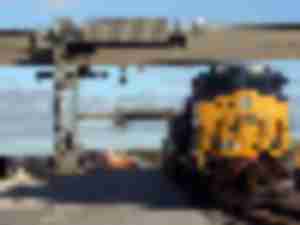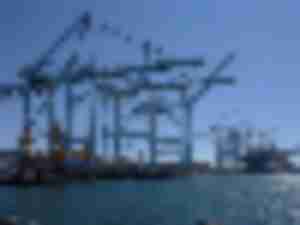Long Beach Port Executive Director hails President Biden’s Infrastructure Bill as “breath of fresh air”, cargo volume to surge in 2021
Mario Cordero, the executive director of Port of Long Beach, welcomed President Joe Biden’s $1.2 trillion infrastructure bill, adding that “we have an administration who talks about ports”. While presenting the infrastructure plan, President Biden had announced that the plan would also include ports besides building highways and bridges.
STB’S Oberman says US railroads reduced service, raised rates and derived $191 billion in dividends and buybacks since 2010
Martin Oberman, chair of the Surface Transportation Board (STB), charged U.S. railroads with reducing service, raising freight rates, shifting more truckloads onto highways, contributing to global warming while deriving $191 billion in dividends and stock buybacks since 2010.
Port of Los Angeles reports 36.8% volume jump in July
The Port of Los Angeles reported year-to-date container volumes were up in July by 36.8% over 2020 levels for a total of 6,318,675 TEUs, according to Gene Seroka executive director, Port of Los Angeles.
UP and BNSF say supply chain partners need to do more to relieve congestion
On August 5th Union Pacific (UP) Railroad CEO Lance Fritz wrote Martin Oberman, chair of the Surface Transportation Board (STB), assuring him of UP’s efforts to address rail congestion issues that includes connecting West Coast ports to Midwest destinations
British American Shipping’s Snell warns US exporters to expect less sailings from some West Coast ports
U.S exporters will face daunting challenges this fall exporting their agricultural products from U.S. West Coast ports: ocean carriers have reduced services from Seattle/Tacoma, Oakland and Vancouver as well as to Southern Asia, Middle East, Mediterranean and South American destinations.
Late deal with striking Canada border service officers cuts short mounting traffic jams
Go-slow job action launched last Friday morning by some 9,000 Canada Border Service Agency (CBSA) officers with enormous implications for the smooth flow of Canada-US trade fortunately lasted well under a day after marathon bargaining sessions produced a deal with the Canadian federal government. Otherwise, the conflict would have also further complicated this Monday’s planned reopening of the border to vaccinated American travelers.
Taiwan eyes a greater geo-economics role to assert its presence in the international arena
The island’s ports play a vital role in sustaining Taiwan’s external trade, an important economic lifeline
Canadian border service officers launch strike action impacting supply chains
Some 9,000 Canada Border Services Agency (CBSA) officers early today launched a work-to-rule job action just three days before the Canada-U.S. border is set to open to vaccinated U.S. travelers on Monday.
Long Beach’s Cordero predicts LA/LB will process 19 million TEUs in 2021
Mario Cordero, executive director, Port of Long Beach, predicted the Long Beach and Los Angeles ports combined will process 19 million TEUs in 2021.
Takeaways from Laurentia’s demise
Though Canada’s federal government earlier this summer firmly rejected the Port of Quebec’s dream of building a second container port on the St. Lawrence River on the basis of serious environmental issues, there were big question marks already on the commercial viability of the Laurentia project.
© Copyright 1999–2025 American Journal of Transportation. All Rights Reserved











